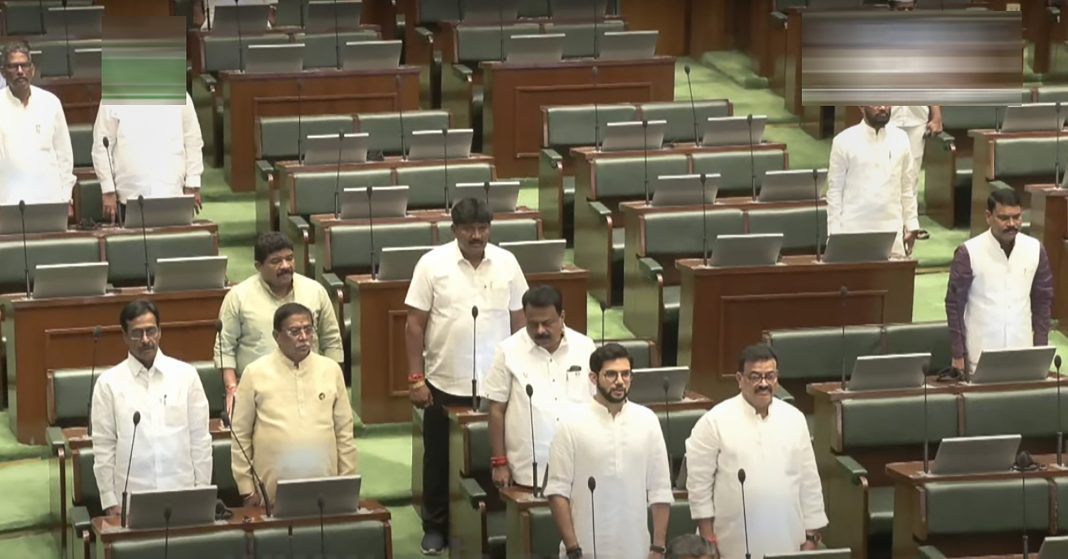Roopak Goswami
Shillong, Dec 7: Researchers from Nagaland University and partner institutions have highlighted the significant antioxidant and antimicrobial properties of Viburnum simonsii commonly as Sohlang-eit-ksew in Khasi, an ethnomedicinal plant native to Meghalaya.
The study, recently published in the Future Journal of Pharmaceutical Sciences, offers scientific validation for the traditional use of the plant by Meghalaya’s Khasi community, which has long claimed its therapeutic value.
This investigation marks the first comprehensive scientific exploration of the plant’s bioactive compounds, positioning Viburnum simonsii as a potential source for pharmaceutical and nutraceutical applications. The research team, led by Samson Rosly Sangma and Mayur Mausoom Phukan, focused on profiling the plant’s phytochemical composition, antioxidant properties, and antimicrobial activity.
Endemic to the Eastern Himalayas and known locally as “Sohlang-eit-ksew” by the Khasi people, Viburnum simonsii has been traditionally used as a tonic and for the treatment of spasms. However, the plant has largely remained unexplored in the scientific realm until now. The researchers were motivated by the absence of prior scientific validation of its medicinal claims.
“Medicinal plants have always played a significant role in traditional healthcare systems, and many modern drugs are derived from them. Our goal was to provide a scientific basis for the Khasi community’s long-standing claims about the therapeutic potential of Viburnum simonsii” researchers associated with the study said.
One of the key highlights of the study was the plant’s antioxidant capacity. Using standard assays, the team found that the fruit extract of Viburnum simonsii demonstrated notable antioxidant activity. These phenolic and flavonoid compounds are known to neutralize harmful free radicals, which can damage cells and contribute to chronic diseases such as cancer, diabetes, and cardiovascular disease.
“Given the global push toward natural antioxidants as alternatives to synthetic compounds, which are often linked to side effects, Viburnum simonsii could play an important role in the development of natural antioxidant supplements” , the study noted.
In addition to its antioxidant activity, the plant’s antimicrobial properties were evaluated against a range of bacterial and fungal pathogens. The study found that extracts of Viburnum simonsii exhibited strong inhibitory activity against gram-positive bacteria such as Staphylococcus aureus and Bacillus cereus. However, the plant’s extract showed no inhibitory activity against gram-negative bacteria like Escherichia coli and Salmonella enterica, nor against the fungus Candida albicans.
The antimicrobial activity is attributed to the presence of bioactive compounds such as alkaloids, flavonoids, and phenolic compounds, which are known to disrupt bacterial cell walls, inhibit protein synthesis, and suppress microbial growth. Such findings underscore the potential of Viburnum simonsii as a source of new antimicrobial agents, especially in an era of rising antibiotic resistance.
A total of 21 bioactive compounds have been found in the plant’s fruit extract.
Several of these compounds are associated with anti-inflammatory, anticancer, and antimicrobial activities. Neophytadiene, a compound with analgesic and anti-inflammatory activity, was also identified in the extracts.
The study’s findings open avenues for further exploration of Viburnum simonsii as a candidate for drug discovery. The researchers emphasize the need for further analysis using nuclear magnetic resonance (NMR) spectroscopy to confirm the structural identity of the key compounds. Additionally, future studies on the plant’s anticancer, antiviral, anti-diabetic, and anti-inflammatory properties could offer new perspectives on its medicinal value.
The researchers also hope to explore the potential of isolating and purifying the bioactive compounds for in-vitro and in-vivo pharmacological testing.
The potential of Viburnum simonsii as a source of natural therapeutics holds promise for the indigenous Khasi community, which has long relied on the plant for traditional medicine. Commercialization of the plant’s bioactive components could create economic opportunities for local communities engaged in the collection, processing, and cultivation of medicinal plants.




